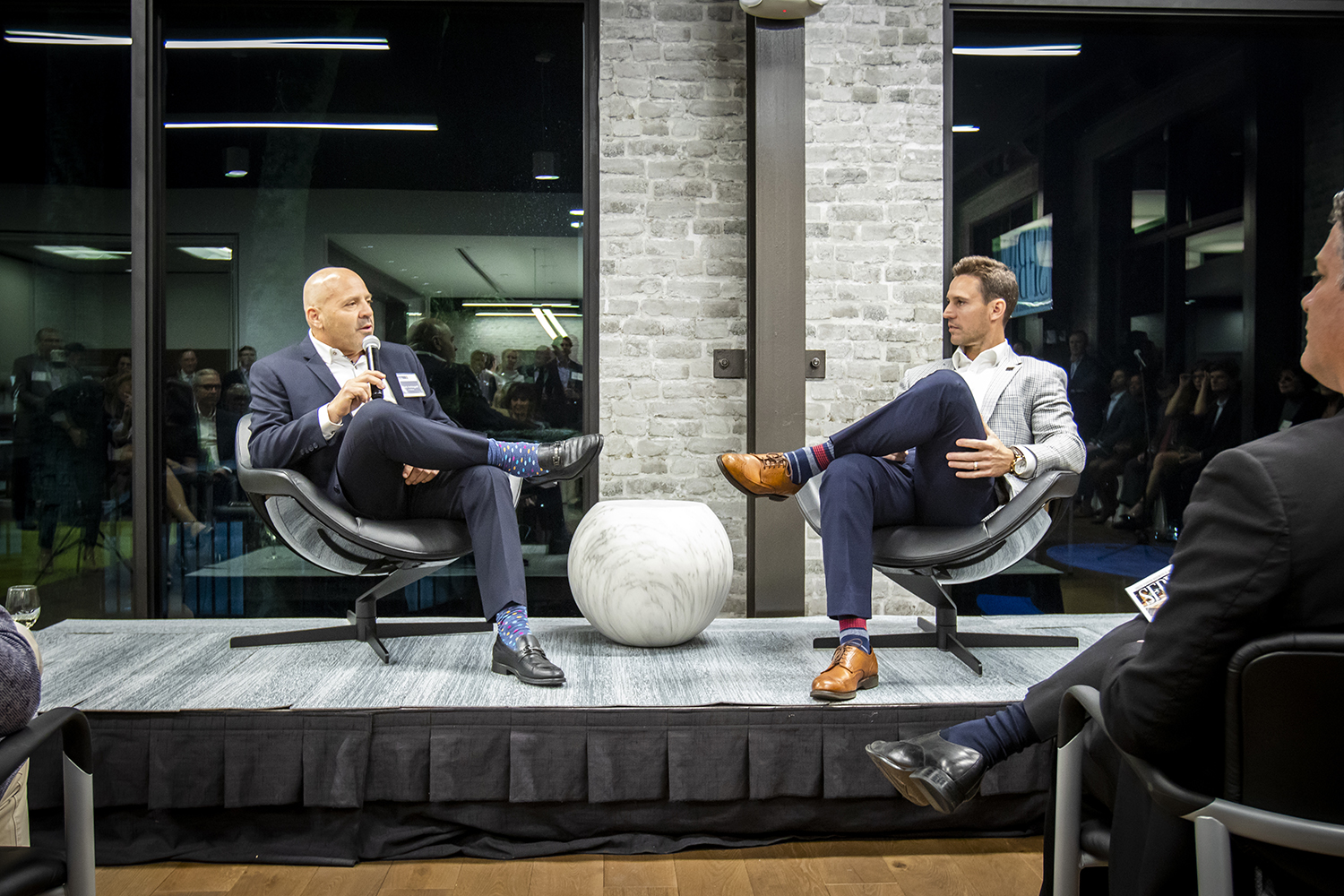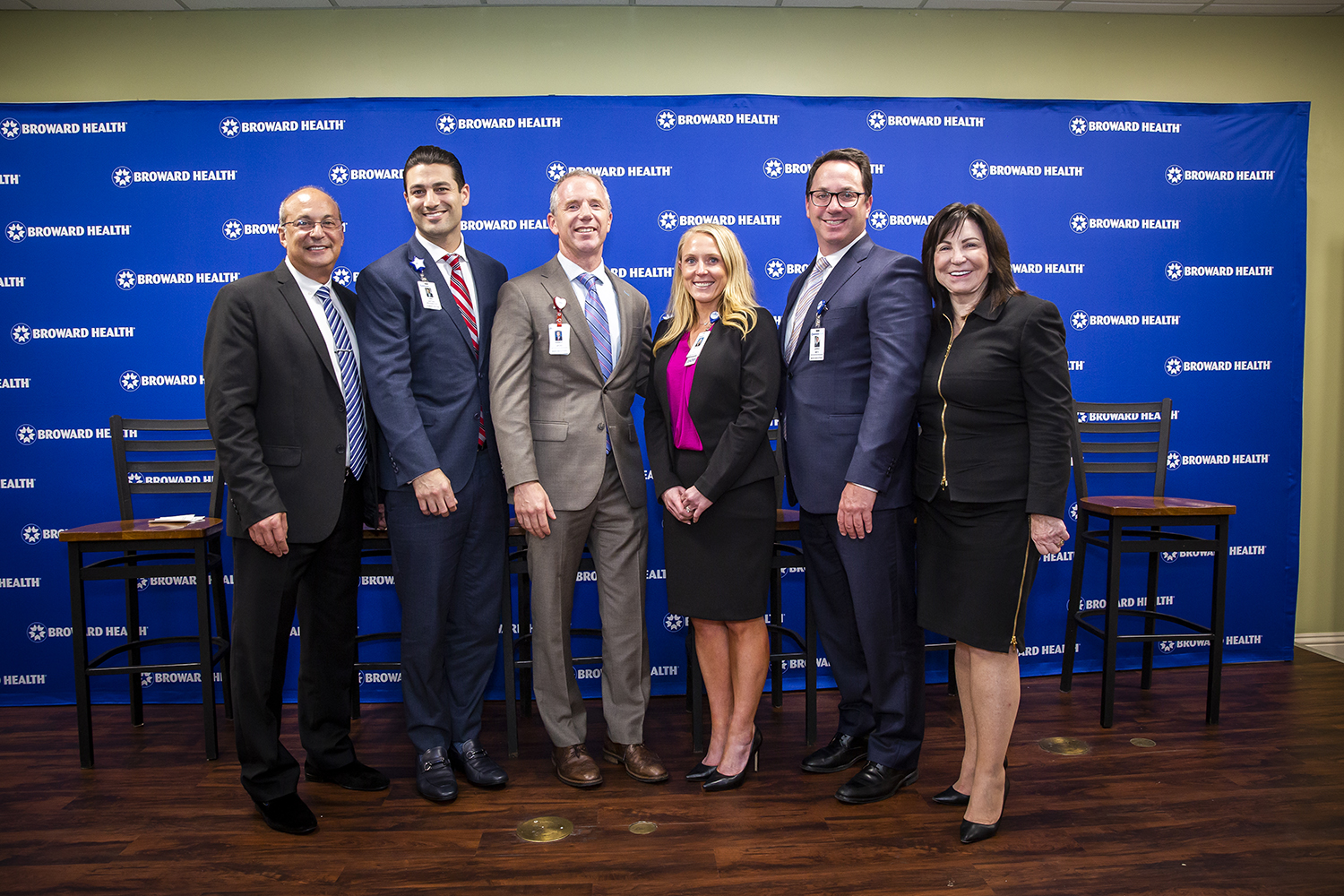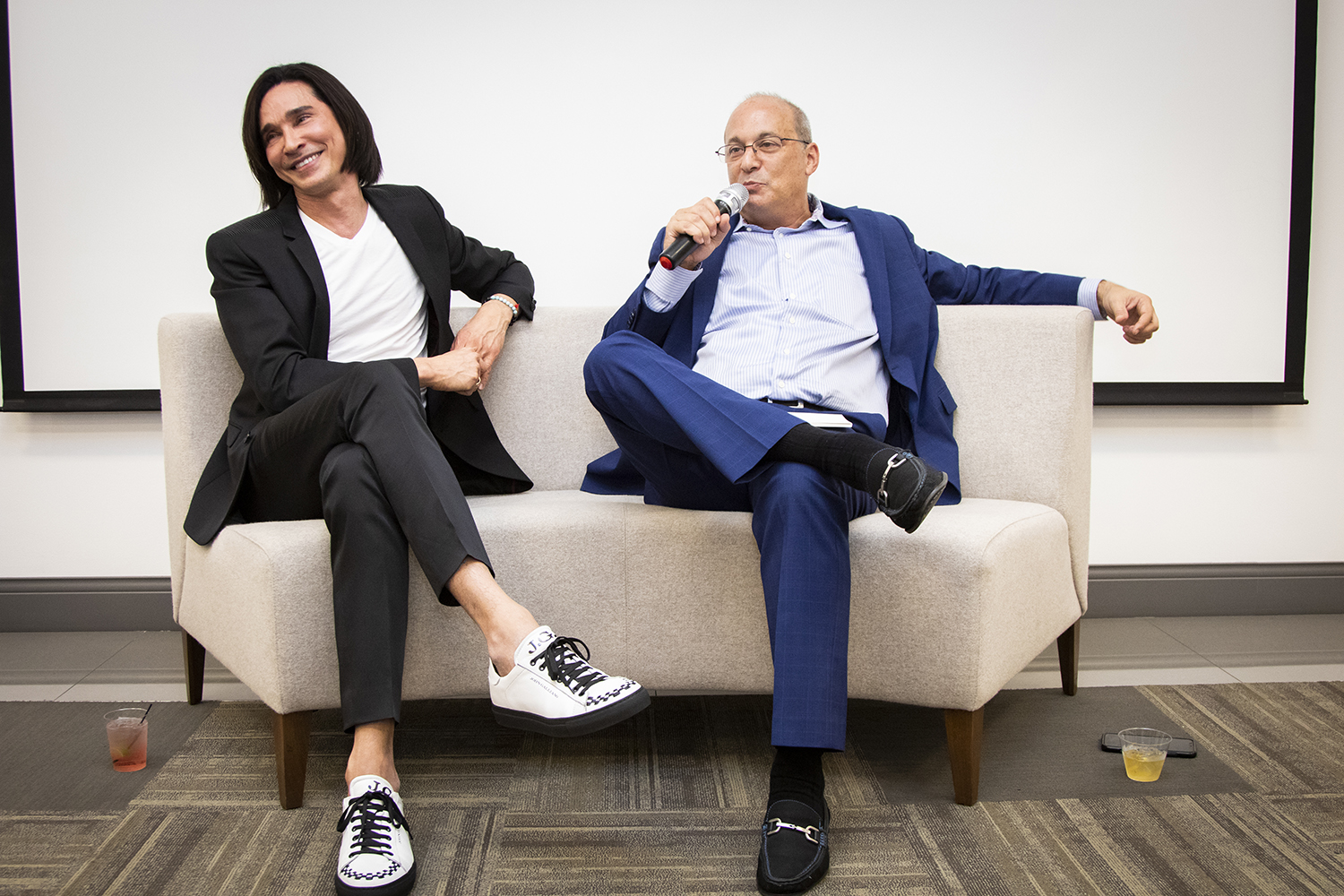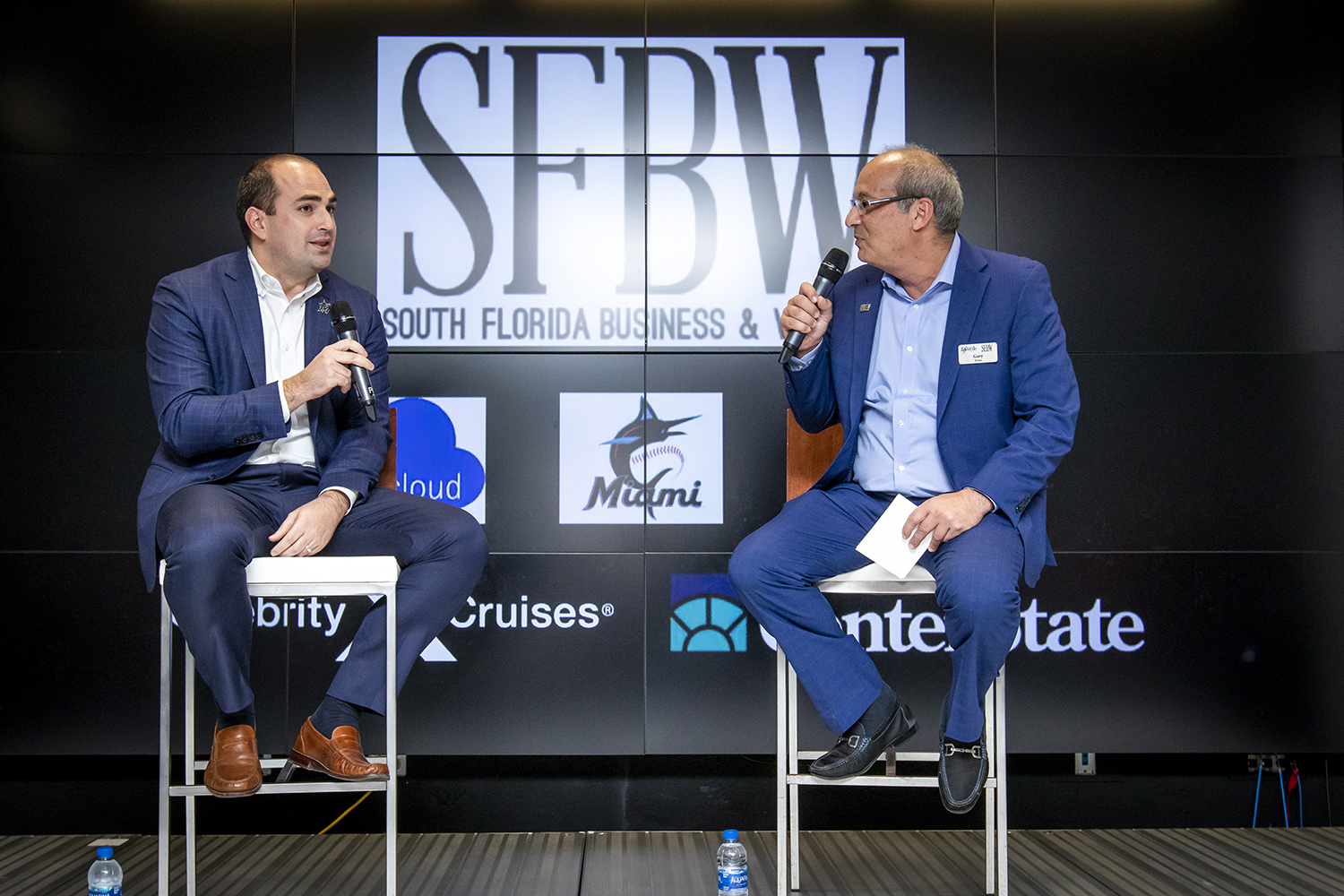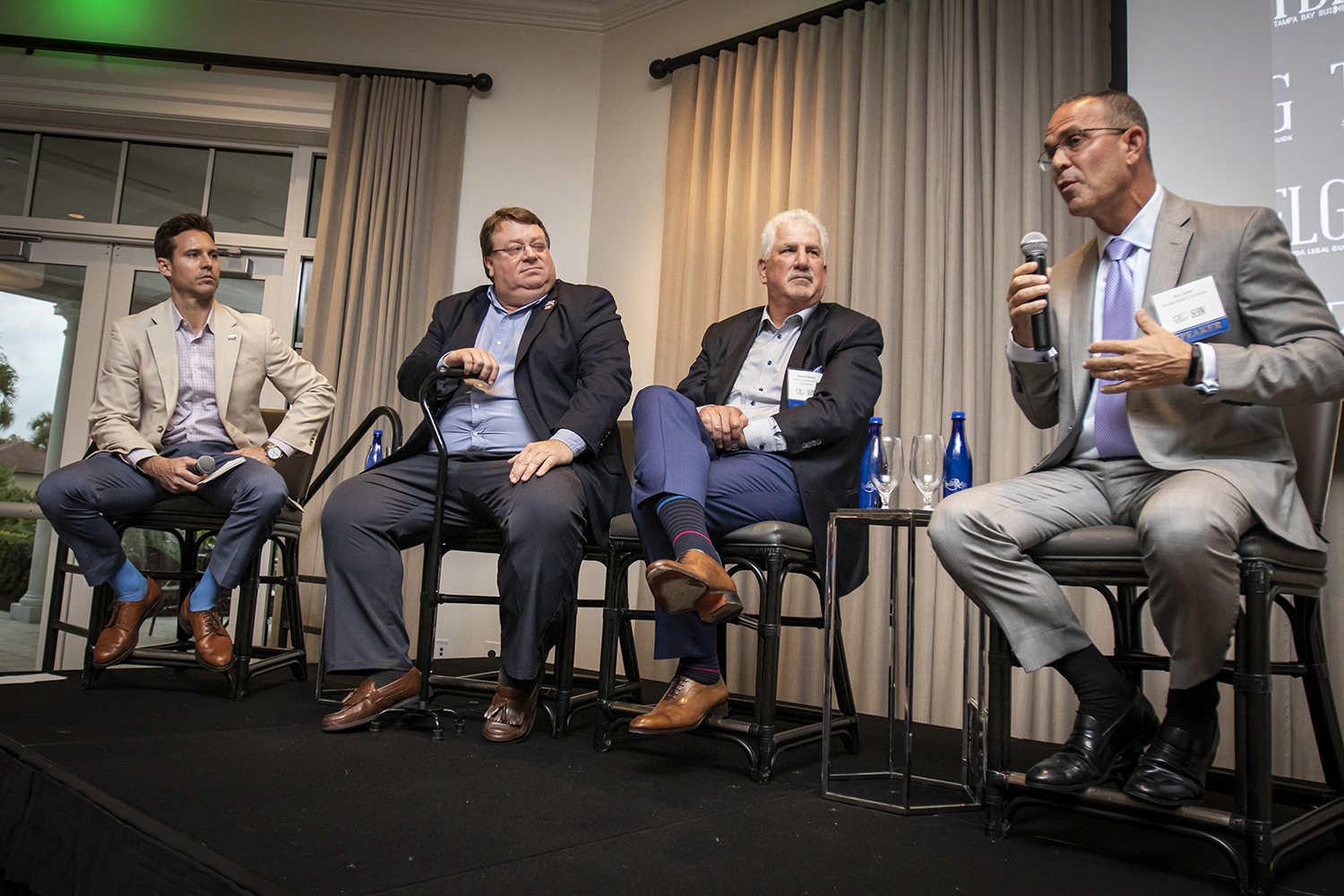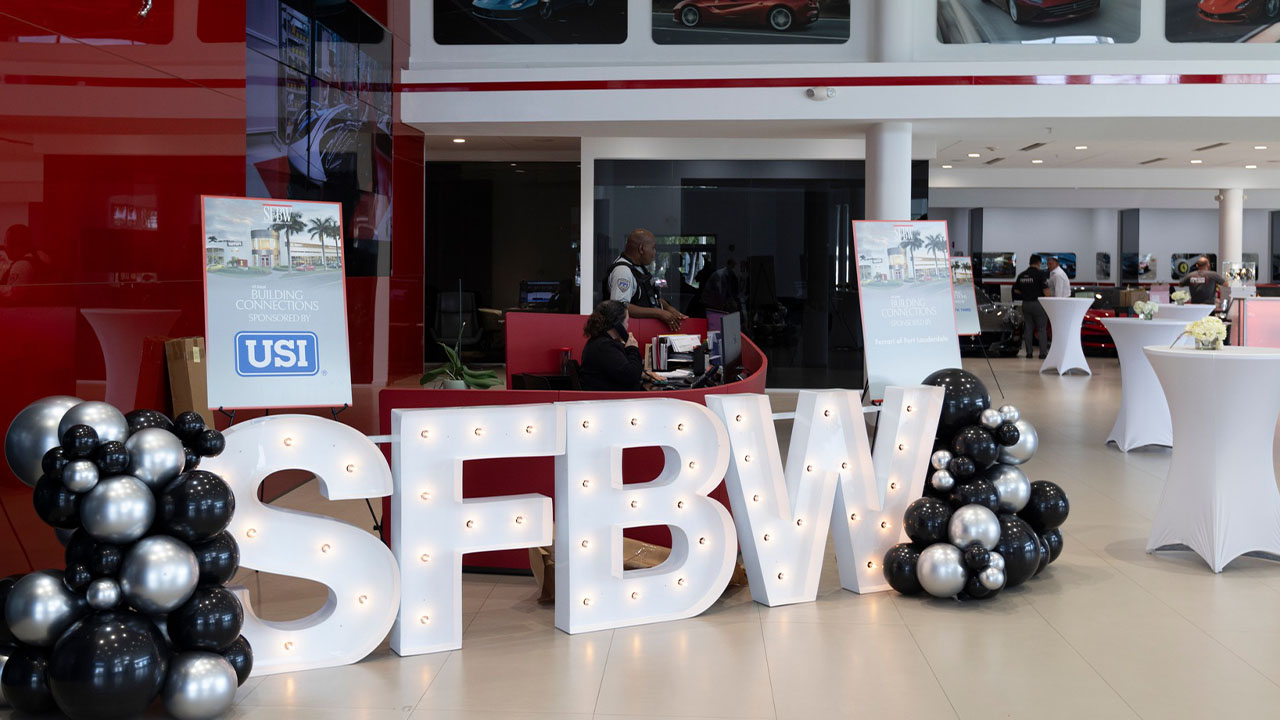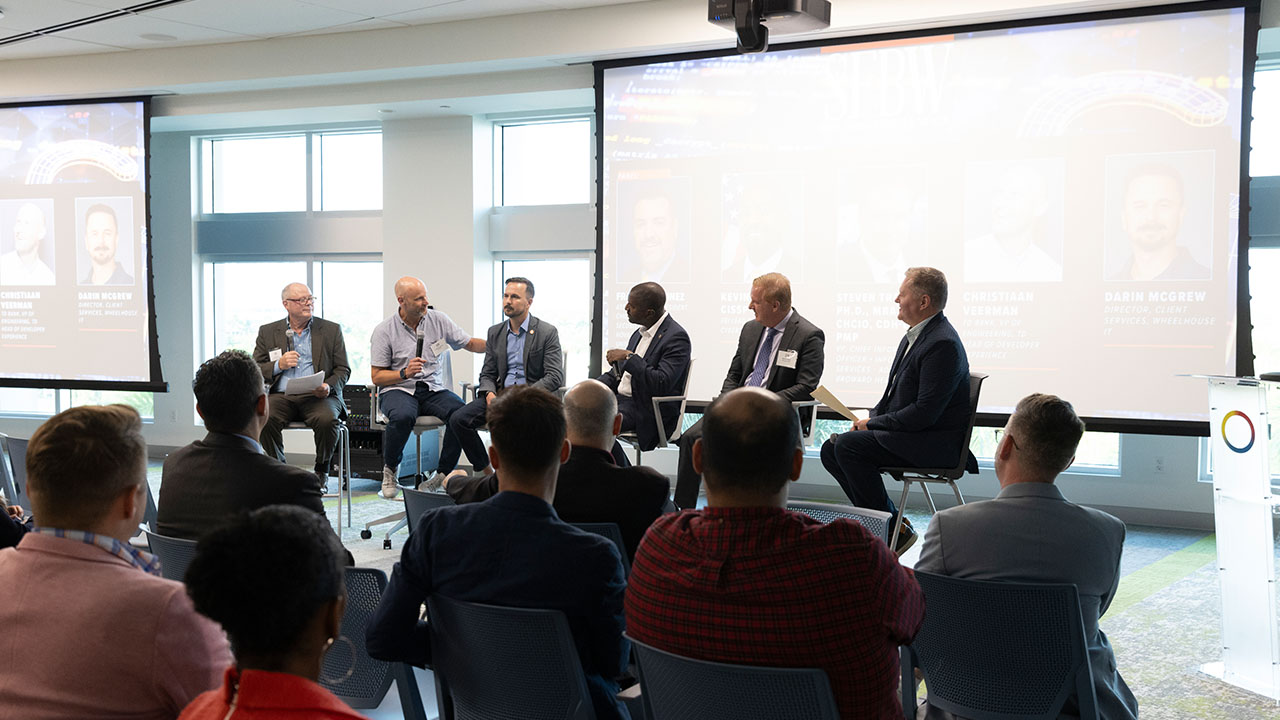[vc_row css_animation=”” row_type=”row” use_row_as_full_screen_section=”no” type=”full_width” angled_section=”no” text_align=”left” background_image_as_pattern=”without_pattern”][vc_column width=”2/3″][vc_column_text]
Mark Feltingoff is the CEO and co-owner of JC White, a full-service, award-winning architectural interior product company. Before purchasing JC White in 2008 with his wife, Sharon, he was an account manager responsible for managing a portfolio of large corporate accounts.
Feltingoff started at JC White in 1984 as an account manager and worked his way up to be a top producer. His ability to recognize and react appropriately to the ever-changing landscape of contract furniture helps distinguish him in the industry. He lives by a mantra that customer satisfaction is the key to success.
He serves on the board of the Holocaust Education and Documentation Center and NSU Ambassadors board. He also volunteers and donates to various charitable causes such as Broward Partnership for the Homeless, the Juvenile Diabetes Research Foundation and the Lotus House.
Feltingoff grew up in Long Island, New York, where he attended the State University of New York at Oneonta, receiving a degree in business administration. He moved to South Florida for the sunshine and available job opportunities and has been a Floridian ever since.
Feltingoff was interviewed by SFBW Associate Publisher Clayton Idle with a few questions from the audience and SFBW Chairman and CEO Gary Press at the end. Here are highlights edited for brevity and clarity.
You grew up in Long Island, New York, you probably came down here on spring break, fell in love with the gorgeous weather and then, all of a sudden, next you know, you’re running one of the most successful furniture companies in South Florida.
I had two college buddies that were living in Deerfield Beach. They told me they were making a million dollars a year. They would go to the beach every day. So, I decided to pack the car up and come to Deerfield Beach. When I got here everything was correct, but they were broke. So, I actually answered an ad in the South Florida Sun-Sentinel for a sales position at JC White.
There’s a beautiful woman here in the front row, Sharon Feltingoff. How did you meet and why did you get married?
I’d say 25 years ago I was living in Miami Beach. I was looking for an apartment and I saw this brand-new place going up. I went into the sales office and there was Sharon and I tried to negotiate with her and she threw me out. So, I called her the next day and I said, “How about I give you this” and she hung up on me. So, I called her back and said, “OK, I’m going to buy it for your price.” We ended up moving in together and we’ve been married ever since. And we have three wonderful kids. We have a daughter at the University of Miami, a son at Indiana University School of Architecture, and a 16-year-old still at home.
Would you talk about starting at the near the bottom and working yourself up to the owner of the company and CEO?
I started here in 1986 as a commissioned salesperson. I took a job at a $25,000 draw against commission. I really didn’t know anybody in South Florida. I banged on a lot of doors the old-style way. I worked really hard. Business was a lot different. We used to go in and sell a client an 8-by-8 cubicle. Each 8-by-8 was $6,000 and now we’re selling a bench that’s $400. So how do we make up with the butts-in-seats ratio to what they’re doing? So, now, as you look at this great space, you can see all the collaborative space, all the breakout space. Those breakout spaces have sort of balanced the playing field for us in the market.
Would you talk about what led you to buy the company?
I was trying to negotiate a deal to become a partner at JC White and the owner wanted no part of that. And I said, all right, I’ve got to go back to the drawing board. So, I said to him, “You know, we have three facilities right now. We have multiple warehouses. How about if we go into one facility and I become the landlord.” So, I cut a deal with him where I bought this building in 2001. It’s 85,000 square feet. Fast-forward about seven years after that, in 2007-08, the gentleman became very ill. He was in denial that he was going to pay us rent when he was already in hospice. And I said to my wife, “I think to save the building, we need to buy the business.” We negotiated a deal with him, and he sold us the business, but we never really got taught how to run it. Here are the keys—and he passed away two days later.
The first thing we did was think about how we get employee buy-in. We can’t treat people the way we used to treat people. Things are changing in the world. And, boy, I think we were ahead of the curve in 2007 for what is going on today.
Today, we have five generations in the workplace. Each generation works differently. How do we create a facility where people want to come to work? That’s the goal that we have here when we come in every morning. We have a client walk through our doors and how do we create a space with their trusted advisers—with their architectural design firm with their third-party tenant rep and with the building owner now? How do we walk that line comfortably? And how do we become an asset to them? And that’s really our goal.
Sharon is the president of your company, and you have distinct roles here, yes?
Sharon makes all the important decisions here. Thank God, she makes those, and if I agree with her, we’re in very good shape. Right? So, thank you, honey, for all that. Sharon runs the most important part of the business. She runs the finance side, the HR side, the IT side, I sort of run the sales, the marketing and the design and the warehouse operation side. We really enjoy going out with our clients, socializing with them at night. I always had a philosophy that if we could become the client’s friend, we could really make an impact.
Will you talk about some of your biggest challenges?
There’s the pressure of new business every day. You’ve got to reinvent yourself. There’s a pressure keeping the culture of the company happy. There’s the pressure of the cash flow. South Florida is the boilerroom capital the world and, you know, everybody wants credit. We’ve been pretty successful. We haven’t gotten burnt too much. I think the biggest pressure that we have is technology and the amount of technology it takes to run a 110-person operation like this, from the back-end operation software, to our design department software, to a collaborative software, how we communicate with clients during the design process, how we communicate with clients during the install process, and how do you tie all those together smoothly. I think one of the best things that Sharon and I have done is put together a great management team, and that management team really represents each department and we listen to them and we embrace what they have to say.
What do you see right now happening in the future of office furniture?
I do have a special guest here tonight. If you look around, this is wonderful showroom, 80 percent of the furniture is from a manufacturer named Haworth. They’re a family owned company out of Holland, Michigan. They are now a global company. They’re all over the world with showrooms and manufacturing facilities. Franco Bianchi, the CEO and our personal friend, is here tonight. He’s been a great business partner of ours. And I would like to provide a platform to talk about workplace environment, what’s happening in the market today.
Bianchi: I happen to be the most fortunate employee of the company because it’s my pleasure to run this global corporation, $2.3 billion, 8,000 employees all around the world. We make great, beautiful furniture for offices, other locations, homes. We make every Ferrari leather interior in a little town in Italy. The biggest challenge is change in our industry. There was never really change, from the mid 1960s to early 2000. You think about your offices. Your office looked pretty much the same for 50 years. The last five to 10 of evolution, largely driven by technology, has started. Do I actually need an office? Why should I work from home instead of a bad place to make bad coffee?
So, our goal, our job is to make your real estate as efficient as it can be and your people as effective and innovative as they can. That’s really kind of the present and the future of our profession. If we don’t bring that element of innovation of design, quality, you know everybody makes a chair, everybody makes a table—not everybody makes a Ferrari’s interior.
So there’s been some mixed opinions about open workspaces. How do you help clients figure out what’s appropriate for their office space?
So, as Franco just said, most of the new people coming into the workforce think they can work from home, they’d rather work from a Starbucks. They would rather work from some sort of social space. So, we see the office changing to exactly this type of atmosphere that you’re seeing here. Everything is low. Nobody is hidden anymore. More people do not have private offices. We see it working. There are people that go against it still. It depends on the work style. If you have accountants, they’re still going to need some privacy. But we are doing corporate headquarters all over South Florida, where they’re putting accountants in benches, but they give more breakout spaces. We have a culture part we go through with a company and we do a workplace strategy session. We go in and we see what type of work the people are doing. And then we try and create the spaces around the type of work that they’re doing.
We’re going through a major renovation at Lifestyle Media Group with you. Until you go through it, you don’t realize how complex it’s really going to be. So what’s your advice for people who are about to embark on this endeavor?
The first thing we say when a client walks in and says, “We have some space, we want to do something.” We say, “Who is your architect? Who is your designer?” If they don’t have an architect, they don’t have a designer, we pretty much know that they need to get one. Our second question: Is there a third-party tenant rep? And that could be anybody from a JLL, to a CBRE, to a Cushman and Wakefield. There’s 100 different companies that do that third-party tenant rep. We built out this space 3½ or four years ago and we thought because we do office furniture that we could handle the construction management. It was the worst mistake we ever made in our lives. We should all hire a third-party tenant rep, and why? We were friends with the general contractor. We were friends with the architect. We couldn’t negotiate as we went down the road. We got caught in permitting issues. It was one thing after another and we probably could have been in six months earlier and probably a couple hundred thousand dollars less.
So, in your industry, there are influencers. How does that work in this ecosystem?
We look at trusted advisers like architects and designers. They could have 10, 15 or 20 projects at any one time, as opposed to an end user. They may do one or two projects a year, one or two projects every couple of years. We became more AD (architect and designer) -driven. We started to do more things in the AD market. And in the last few years, we’ve seen a huge pickup with the third-party tenant rep business and it sort of balanced out the playing field. The third-party tenant rep is almost like a mechanic when you bring in your car. Do you listen to the sales guy or do you listen to the mechanic? That third-party tenant rep will probably save you a ton of money.
So what’s on the horizon for JC White? You’ve got this beautiful showroom. Then you’ve got the office in West Palm Beach.
This has been the center. We do have a beautiful collaborative 7,000-square-foot showroom on Dixie Highway in downtown West Palm Beach. We are looking at a great opportunity down our Brickell Avenue now with a co-space to sort of share with them.
When you look at the next five years, do you see any threats on the horizon?
I think the hardest thing is going to be getting employees engaged in this type of business. How many college kids get out of college and say they want to be in office furniture? So, it’s a tough field to find your help. But I think there’s a positive: Everybody in this room, no matter where you work, whether you re-sign a lease, whether you move or whether you stay, you must change your space. Because if you don’t change your space, you never going to be able to hire another person. ♦
About CEO Connect
SFBW’s CEO Connect series is an exclusive, invitation-only monthly event that brings together South Florida’s top business leaders to meet and mingle.
The gold level sponsors are Celebrity Cruises, CenterState Bank, ProFi and C3.
The evening begins with a cocktail reception for about 100 guests followed by the highlight of the event, a live interview conducted by Gary Press, SFBW Chairman and CEO or Clayton Idle, Managing Director and a well-known C-level executive who provides insight into their personal lives, careers and views on issues affecting the business community.
Partnering with SFBW on this exclusive event provides an opportunity to network with the area’s business elite, generate new business opportunities, and increase brand awareness. For information about event sponsorship opportunities, email Clayton Idle at cidle@sfbwmag.com.
[/vc_column_text][/vc_column][vc_column width=”1/3″][vc_gallery interval=”3″ images=”39749,39748,39747,39746,39745,39744,39743″ img_size=”Full” show_image_description=”yes”][/vc_column][/vc_row]


